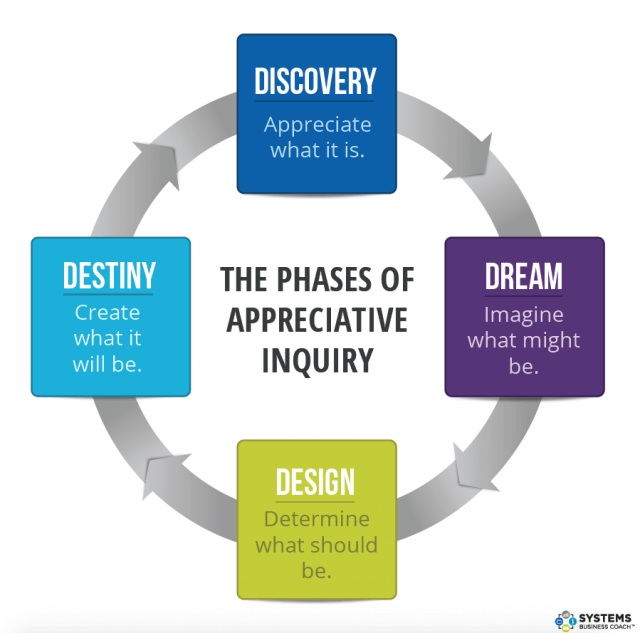Problem solving tools are determined by the requirements of the problem and the amount of time to solve the problem. There are four basic steps in problem solving regardless of size or This workshop introduces Lean Problem Solving as a teachable, scalable approach based on the scientific method (PDCA), which can be applied to the vast majority of your problems. When linked to core management systems, it helps to strengthen standards and build your lean management system organically, based on your needs. Problem solving consists of using generic or ad hoc methods in an orderly manner to find solutions to problems. Some of the problemsolving techniques developed and used in artificial intelligence, Other problem solving tools are linear and nonlinear programming, queuing systems, and simulation. Problem solving tools and methods are useful only to the extent that they stimulate human thinking. When using any problem solving tool or method, always visit the Hansei page, which is overflowing with questions designed to stimulate human thinking. Tools used in Problem Solving Universal principle, called the vital few and trivial many Pareto's Principle or the 8020 Rule 20 percent of something I have what seems to be a very straight forward math question, but it has haunted me for years. This is a question one of my daughters had a homework years back when in grade 4 or 5. For a more comprehensive explanation of the 7 problem solving steps, plus a wide range of tools to help you take them, go to our greatvalue eguide: Whats the Problem. This guide is designed to help you find the right problems then take steps to address them. Introduction to Problem Solving Techniques. A problem is a situation that presents difficulty or perplexity. Problems come in many shapes and sizes. For example, it can be: Something did not work as it should and you don't know how or why. The effectiveness of the tools they are using in carrying out the solution; 5. The Seven Basic Tools of Quality is a designation given to a fixed set of graphical techniques identified as being most helpful in troubleshooting issues related to quality. They are called basic because they are suitable for people with little formal training in statistics and because they can be used to solve the vast majority of qualityrelated issues. The DMAIC problemsolving method can produce significant improvements for an organization that is using the Six Sigma methodology and tools. The method offers a five step plan which offers organizations a roadmap to follow so that issues can be resolved using a structured methodology. The MoreSteam Toolbox offers online tutorials covering the fundamental problemsolving tools used to support Lean Six Sigma and other process improvement. DRIVE is an approach to problem solving and analysis that can be used as part of process improvement. D ene the scope of the problem the criteria by which success will be measured and agree the deliverables and success factors In this training presentation, you can teach the structured PlanDoCheckAct (PDCA) approach to problem solving. Many world class companies such as Toyota uses the PDCA problem solving process for relentless pursuit of continuous improvement. Problem solving strategies are common place in business and it is essential that the right tool is used for the specific problem in hand. Process improvement and effective problem solving strategies are two weaknesses of many companies. Problem Solving Tools is a halfday training session that teaches participants a nonblaming method and set of tools to identify and solve small to large scale process problems at. Data Collection and Organization Tools Before you can solve a problem, you need to know what the problem is! It sounds obvious, but more often than not, we are addressing symptoms of problems and never getting to the root cause of the problem. Problem Solving Techniques: A 5Step Approach. Some problems are small and can be resolved quickly. Other problems are large and may require significant time and effort to solve. Start your quality journey by mastering these tools, and you'll have a name for them too: indispensable. Causeandeffect diagram (also called Ishikawa or fishbone chart): Identifies many possible causes for an effect or problem and sorts ideas into useful categories. We define a tool as something you use to help accomplish a task. There are many tools available to the CPS practitioner, but you don't have to use any of them. CPS mirrors our natural creative process, so you may find that for some CPS tasks, your natural divergent or. Problem Solving: 3 Highly Effective Tools. Particularly useful for problem solving are some of the thinking tools devised by Edward De Bono, a leading authority on teaching thinking as a skill. Just as a carpenter learns how to use specific tools for certains tasks, attentiondirecting tools in the field of thinking and problem solving can be learned and used also. A 2010 study published in Behaviour Research and Therapy found that kids who lack problemsolving skills may be at a higher risk of depression and suicidality. Additionally, the researchers found that teaching a child's problemsolving skills can improve mental health. The CPS method used in schools is a useful process for problem solving. Tools and techniques for problem solving include brainstorming, mindstorming using automatic writing, and reverse brainstorming using intelligent memory strategy. Tools to be used: Data collection for background information (is is not analysis). Defining the root causes of a problem is the core of the 8D problemsolving process. This is normally the toughest aspect of the problemsolving process; if the root causes of the problem were obvious, then the problem. The eight steps to practical problem solving also include the Plan, Do, Check and Act (PDCA) cycle. Steps one through five are the planning process. The doing is found in step six. Step eight involves acting out the results of the new standard. They are tools required to facilitate the process of problem solving, including root cause analysis and corrective action. IS IS NOT IS IS NOT is a problem solving tool that explain the rational process for finding the possible root cause of the problem. Problem solving is the process of a problem analysis and resolving it in the best way possible for that situation. This process contains analysing the problem ( root cause analysis ), defining countermeasures for the problem and implementing the right solution for that situation. PROBLEMSOLVING and DECISIONMAKING TOOLS Presented by: Karen Deering, Jon Ross, Mark Kesler THE PDSA CYCLE CONTINUOUS PROCESS IMPROVEMENT CYCLE THE SEVEN PHASES TO THE PROBLEM SOLVING METHOD 6 PRINCIPLES OF TQM Mark Problem solving is the process of recognizing a difficulty or complication, identifying possible solutions, and then implementing one. Problems come up regularly at work, just as they do in. 2 Techniques Tools Brainstorming SWOT 5 Whys Drill Down Flowcharting Analytical Problem Solving Brainstorming Used to develop a large number of creative solutions to a problem. It can also help you get buy in from team members for the solution chosen after all, they have helped create that solution. Brainstorming and team problemsolving techniques are both useful tools in this stage of problem solving. Problem solving, and the techniques used to derive elucidation, can only be effective in an organization if the solution remains in place and is updated to respond to future changes. The Eight Disciplines of Problem Solving (8D) is a problem solving methodology designed to find the root cause of a problem, devise a shortterm fix and implement a long. The Six Step Problem Solving Model. Problem solving models are used to address the many challenges that arise in the workplace. While many people regularly solve problems, there are a range of different approaches that can be used to find a solution. The McKinsey Mind: Understanding And Implementing The ProblemSolving Tools And Management Techniques Of The World's Top Strategic Consulting Firm 2003 by Ethan M. This FREE eBook outlines five problemsolving tools that can each be used to look at a particular problem from a different perspective download it now for your PC, laptop, tablet, Kindle or Smartphone. Problem Solving is a structured worksheet which encourages solutionfocused thinking. Clients are encouraged to identify a problem, then to identify multiple potential solutions, then to take steps to put a solution into action. In nearly every career sector, problem solving is one of the key skills that employers seek in job applicants. It is hard to find a blue collar, administrative, managerial, or professional position that doesn't require problem solving skills of some kind. Whether you're solving a problem for a client (internal or external), supporting those who are solving problems, or discovering new problems to solve, the problems you face can be large or small, simple or complex, and easy or difficult. Various Tools and Methods for Problem Solving and Decision Making (Many people would agree that the following methods and tools are also for decisionmaking. To combat these issues and adopt a fresh approach, teams can use the methods and tools of Root Cause Problem Solving to first view problems as opportunities for improvement, identify root causes and implement solutions to prevent recurrence. Our problem solving activity tool does just that, providing a process to frame your problem as an opportunity and a question checklist to help you define what exactly the problem is, and why it is worth your while solving it. The question checklist also leads you through a structured set of questions to start the analysis of the problem. Effective ProblemSolving and DecisionMaking from University of California, Irvine. Critical thinking the application of scientific methods and logical reasoning to problems and decisions is the foundation of effective problem solving and. Structured problem solving is a practical skill designed to help you find practical solutions to everyday problems. Structured Problem Solving (SPS) is a step by step process, which This page helps you learn 47 business problemsolving skills. On it, youll find out about general problemsolving techniques; learn skills that help you drill down into the root causes of problems; discover how to solve particular types of problems; and find out how to understand and solve issues with business processes. Creative problem solving is a process that, if you have the right tools and activities at hand, you can consistently achieve fantastic results from. For your session to be a success you need to make sure you move past the first few obvious ideas, you generate tonnes of alternatives and that you postpone judgment on the quality of each idea. Approach Problem Solving by applying Skills only Problem Solvers, Consultants and Business Analysts can. Practice those very Skills here through a Dedicated Section (13) on Practice Activities What effectively works for you as you master the art will effectively work the same for all your team members. Problem solving and Problem analysis tools. Problem solving and analysis forms an integral part of continuous improvement and allows the appropriate selection of kaizen, process analysis and lean concepts not only to solve problems but to uncover hidden opportunities and areas which are. Problemsolving is a mental process that involves discovering, analyzing and solving problems. The ultimate goal of problemsolving is to overcome obstacles and find a. Here are some useful methods for effective decisionmaking and problemsolving: First a simple stepbystep process for effective decisionmaking and problemsolving. Problemsolving Tool Guides explain how various analytical methods and techniques can be applied to improve an understanding of crime and disorder problems. The Problem Solving Tools and Techniques presented here can be used to solve problems, make great decisions, and do a wide array tasks. Easy to learn and use Tools and Techniques.











